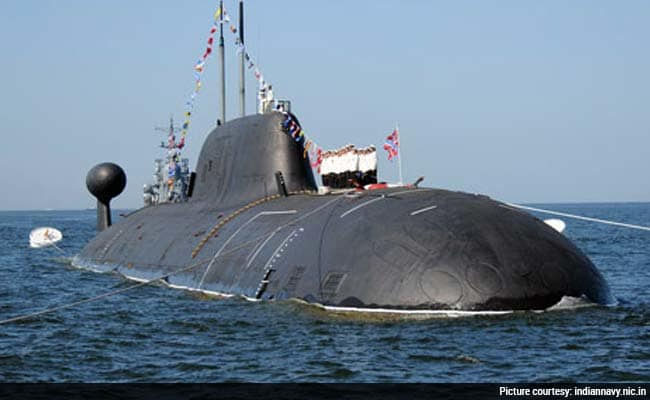INS Arihant – A Marginal Edge: Admiral Arun Prakash (Retd)
December 22, 2018
The surge of national pride at the recent completion of “deterrent patrol” by the Indian Navy’s first home-built, nuclear-propelled, ballistic-missile-armed submarine (termed SSBN), INS Arihant, is fully justified.
Just five other countries have the capability of building a nuclear submarine, arming it with nuclear-tipped missiles and deploying it operationally.
By way of comparison, China’s first SSBN, the Type 092 Xia, became operational in 1983, but faced endless problems, including technical unreliability and radiation leaks from its nuclear reactor. The Xia never went on a patrol and a sister submarine reportedly sank after a mishap.
As a nation committed to “no first use” (NFU), it is of critical importance that there should never be a doubt about the credibility of India’s nuclear deterrent. It is the iron-clad guarantee of a swift, devastating response that will deter our adversaries from contemplating a first-strike.
However, since nothing stays hidden from the prying eyes of satellites and other technical devices, the two land-based legs of the nuclear triad — missiles and fighter-bomber aircraft — remain exposed to pre-emptive enemy attack. The best way to invest the nuclear deterrent with invulnerability is to send it underwater, on a SSBN. Once the sub dives, it becomes invisible and can remain on patrol for months, with its ballistic missiles ready for launch on command.
India’s achievement and claims vis-à-vis INS Arihant will be subjected to the closest scrutiny by intelligence experts and security analysts worldwide. INS Arihant’s first patrol, apart from demonstrating that the submarine is fully operational, is also proof of: crew proficiency in operating its nuclear-reactor and other complex systems, establishment of standard operating and safety procedures and the functionality of the navy’s underwater communication system which can deliver encrypted messages containing targeting information and launch commands over thousands of miles.
While full political mileage must be drawn from this significant technological accomplishment, there is need to avoid hyperbolic statements that may erode the credibility of the nuclear deterrent. It is, therefore, necessary to understand that the third leg of the triad is currently a “work in progress” and will remain so for some time. There are three main reasons for this.
Firstly, the role of an SSBN is to pose a nuclear threat to adversary targets that are either population centres or military nodes. It does this by positioning itself in a safe patrol area that is remote from shipping traffic, but within missile range of its likely targets.
While most potential targets in Pakistan and China are between 1,600 and 4,000 km from the Bay of Bengal, the K-15 missile, reportedly carried by INS Arihant, has a range of less than 1,000 km. Therefore, to target cities and nuclear forces deep inside China or Pakistan, from a “safe haven”, an Indian SSBN will need to be armed with missiles of at least 3,000-5,000 km range — no doubt under development.
Secondly, as a measure of prudence, India’s (and perhaps Pakistan’s) policy has, so far, kept nuclear warheads separate from delivery vehicles, in a “de-mated” state. The final assembly is undertaken by scientists of the Departments of Defence Research (DRDO) and Atomic Energy (DAE) and the completed weapon handed over to the military just prior to launch.
However, INS Arihant and her sisters will carry their missiles in sealed containers, with pre-mated warheads. Scientists having been eliminated from the chain, custody and control of weapons will now devolve on the submarine’s captain. No doubt a “fail-safe” electronic permissive action links (PAL) must be in place, to prevent accidental launch and ensure instant compliance with an authorised launch command.
However, electronic measures are not good enough and the induction of the SSBN calls for structural changes in India’s higher defence organisation. A major lacuna here is the missing military element in the Nuclear Command Authority headed by the Prime Minister. This lacuna is best rectified by the early creation of a Chief of Defence Staff.
Lastly, acquisition of nuclear submarines being an expensive proposition, some discussion on this topic is germane. If a range of new, long-range missiles is under development, their weight and dimensions will call for a larger hull and a considerably more powerful reactor for propulsion — in other words, a new SSBN design.
Apart from its strategic significance, INS Arihant is a live example of how Prime Minister Narendra Modi’s “Make in India” vision could have been actualised. The Advanced Technology Vessel (ATV) programme, under which it was built, mobilised a large number of major and minor private-sector companies (including MSMEs), which contributed to the programme by mastering esoteric technologies, to design and fabricate systems for this vessel. The ATV project has created a gene-pool which will contribute ever-increasing indigenous content to the programme in years ahead.
The prime lesson that has emerged from the successful ATV programme is related to project management. Funded by the DRDO, the ATV programme was headed, manned and managed exclusively by naval personnel, which included nuclear engineers, ship designers, submarine operators and logisticians. Retaining a sharp focus on the end product, this team overcame many hurdles and impediments to deliver INS Arihant.
The story of other defence projects, like the Kaveri turbo-jet engine, the Tejas Light Combat Aircraft, the Arjun battle tank and the Trishul surface-to-air missile could have been very different had the Ministry of Defence ensured intimate user involvement and enlisted help of the armed forces for adroit and time-bound project management.
Indo-Asian News Service
Courtesy: Gulf Today

